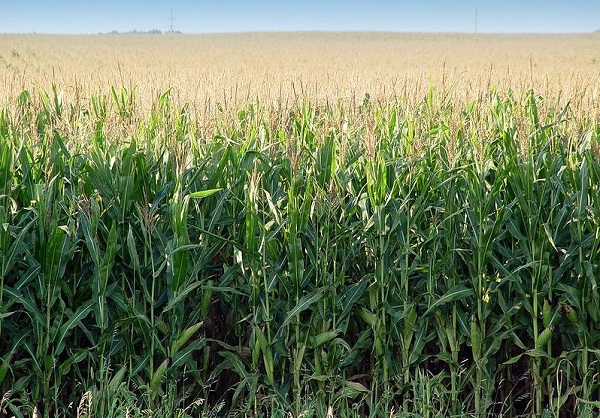Scientists and environmentalists have long warned that biofuel production could have troubling land-use consequences, and now there’s new research that appears to confirm some of the worst fears.
In a peer-reviewed article – disputed by the biofuels industry – researchers from South Dakota State University say some 1.3 million acres of grasslands in the “Western Corn Belt” running through the Dakotas, Minnesota, Nebraska and Iowa have been lost because “(h)igh corn and soybean prices, prompted largely by demand for biofuel feedstocks,” are encouraging farmers to plant crops on the land.

The irony here is that biofuels are sold by the industry a way to help protect Earth and its ecosystems from the likely ravages of climate change. Just last week, responding to president Obama’s call for action on climate change, the National Biodiesel Board put out a press release calling biodiesel “a practical, cost-effective and bipartisan solution that’s here today to address this problem.”
But the new study by Cristopher Wright and Michael Wimberly, published this week in the Proceedings of the National Academy of Sciences, says the loss of grasslands – native prairie and man-modified grasslands alike – could be having a devastating effect:
Across the WCB, more than 99% of presettlement tallgrass prairie has been converted to other land covers, mostly agricultural, with losses in Iowa approaching 99.9% of an original 12-million ha of tallgrass prairie. Potential expansion of corn and soybean cultivation into remaining fragments of tallgrass prairie in the WCB presents a critical ecosystem conservation issue.
None of this is news to environmental groups. Just a few weeks ago, Fuel Fix reported that Enviornmental Working Group joined with antipoverty activists and deficit hawks to call on Congress to reform the renewable fuel standard that drives ethanol production. EWG said corn ethanol was “not only … a disaster for consumers, most farms and taxpayers; it’s also been a disaster for the environment. In fact, it’s worse for the environment than the Canadian tar sands.”
The RFS technically does seek to move the country away from using food feedstocks for biofuels production, but cellulosic ethanol, using inputs like perennial crops such as switchgrass, has been slow to arrive. The authors sound like they are losing hope:
Even if recently converted grasslands were subsequently converted to perennial bioenergy crops, substantial carbon debts would still persist. With respect to conservation of biodiversity and wetlands, the maintenance of mixed-grass prairie as pasture, or possible harvest of mixed-grass prairie as a cellulosic biofuel feedstock, is clearly a preferable alternative to grassland conversion. However, the development of a cellulosic biofuel industry in the United States has been slow. The present study indicates that the window of opportunity for realizing benefits of perennial bioenergy crops may be closing in the WCB.
The industry is more optimistic about cellulosic ethanol’s prospects. But apart from that, the industry maintains it is hardly clear that a push for more corn and soybeans for the current generation of biofuels is leading to grassland losses. According to a blog post by the Renewable Fuels Association:
The study’s findings stand in stark contrast to U.S. Department of Agriculture (USDA) acreage data, which show increased corn and soybean acres in the region have occurred via crop switching, not cropland expansion. Further, the extremely high rate of error associated with the satellite imagery used by the authors renders the study’s conclusions highly questionable and irrelevant to the biofuels policy debate.
Editor’s note: This article was updated after its original publication to add in the response from the Renewable Fuels Association.